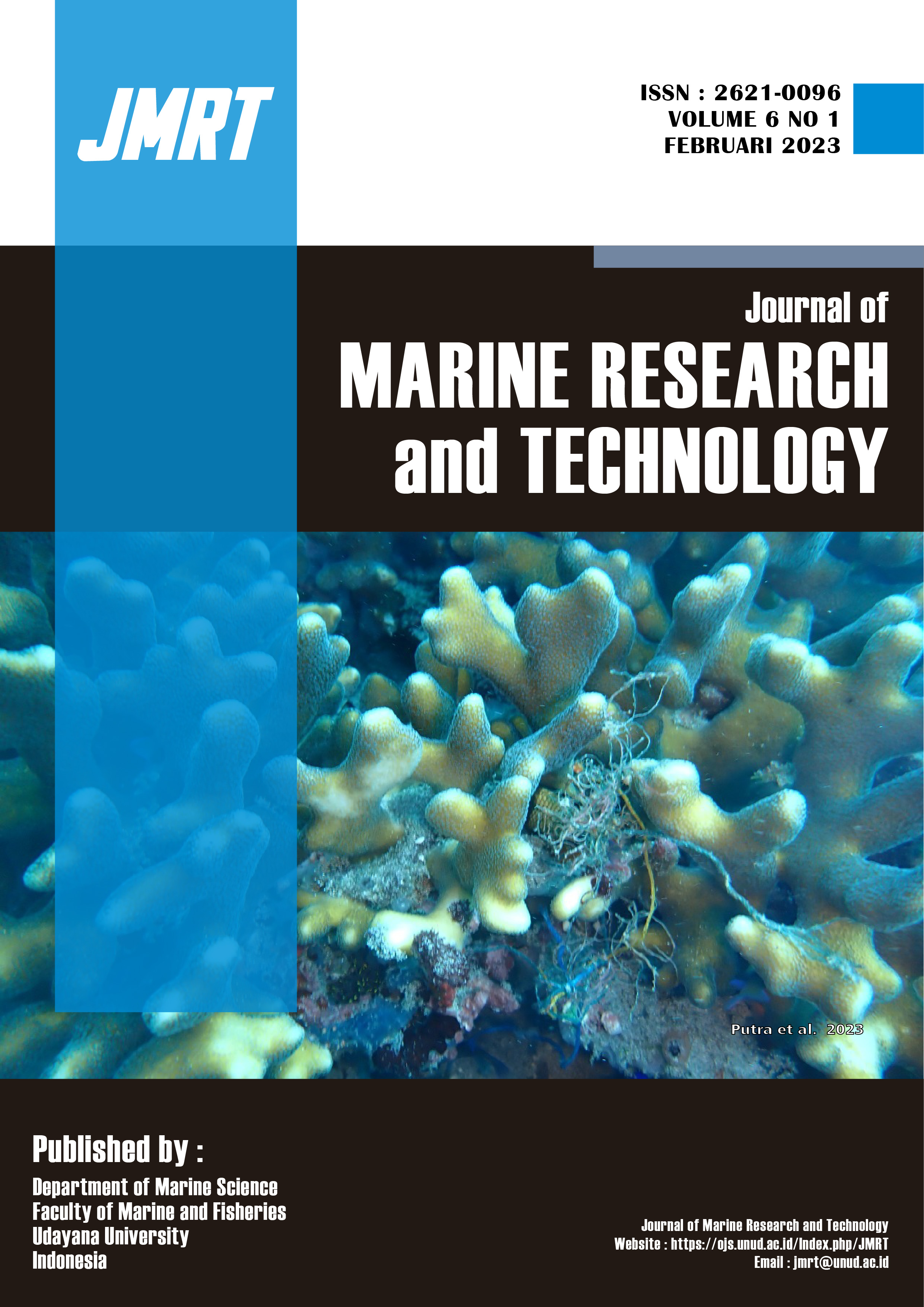Perbandingan Akurasi Metode Empiris untuk Pemetaan Batimetri Perairan Benoa, Bali, Menggunakan Citra Satelit SPOT
Accuracy; Bathymetry; Lyzenga; MLR; Polynomial; RMSE; Stumpf; VHS
Abstract
Satellite Derived Bathymetry (SDB) is an alternative method to obtain bathymetry information data developed by utilizing image data as data sources. This study aimed to compare the accuracy of five empiric methods: the Stumpf Method, Polynomial Method, Multilinear Regression Method (MLR), Lyzenga Method, and Van Hengel and Spitzer Methods (VHS). This research was located in Benoa, Denpasar, and Bali using SPOT 6 satellite imagery with a spatial resolution of 6 meters as the data source. The acquisition was on August 12, 2017, in situ data. The accuracy test was carried out by calculating the coefficient of determination (R2) and the RMSE value. The SPOT 6 image requires an image interpretation process, including radiometric correction and atmospheric correction using DOS and land and water masking using the NDWI equation to obtain accuracy test and bathymetric information. Stumpf method has an RMSE of 5.72 meters, R2 of 0.27. The polynomial method has an RMSE of 6.99 meters R2 of 0.01. The Multilinear Regression method has an RMSE of 5.75 meters R2 of 0.34. The Lyzenga method has an RMSE of 7.66 meters R2 of 0.09. The Van Hengel and Spitzer method has an RMSE of 6.97 meters R2 of 0.03. Based on the results of calculations from this study, the Stumpf method has the highest accuracy with an RMSE of 5.72.
Downloads
Copyright Notice
The copyright to this article is transferred to Journal of Marine Research and Technology (JMRT). The copyright transfer covers the exclusive right and license to reproduce, publish, distribute and archive the article in all forms and media of expression now known or developed in the future, including reprints, translations, photographic reproductions, microform, electronic form (offline, online) or any other reproductions of similar nature.






